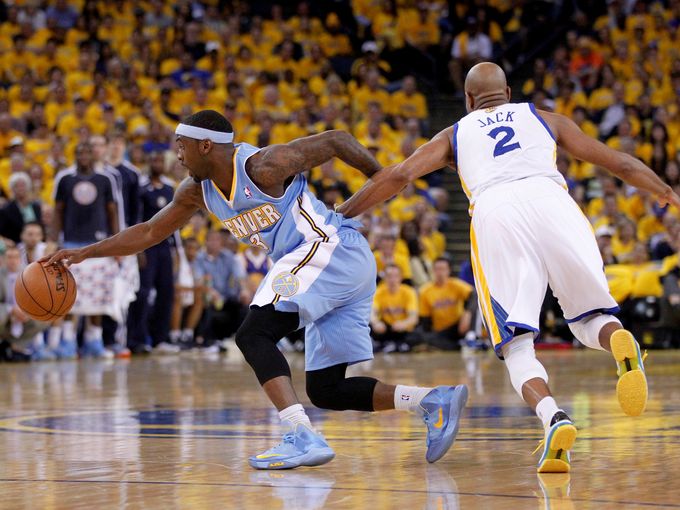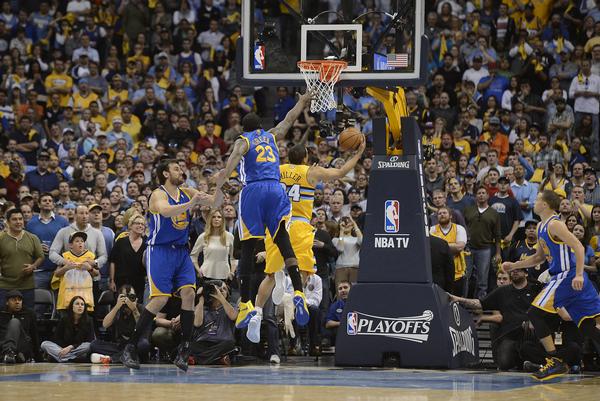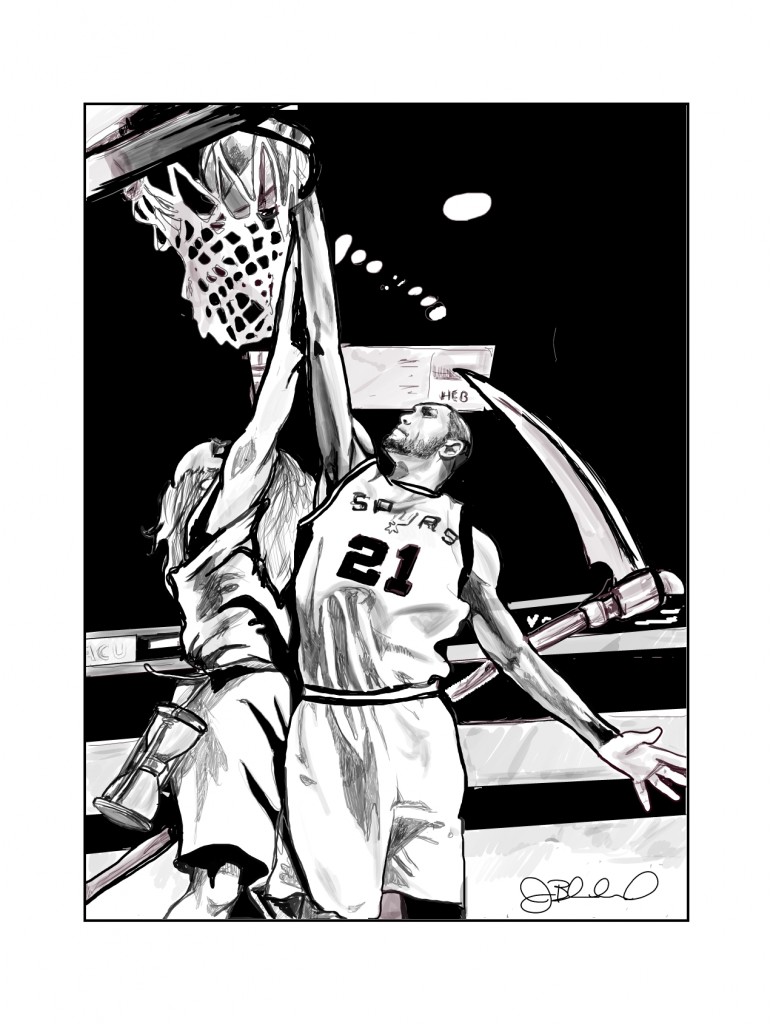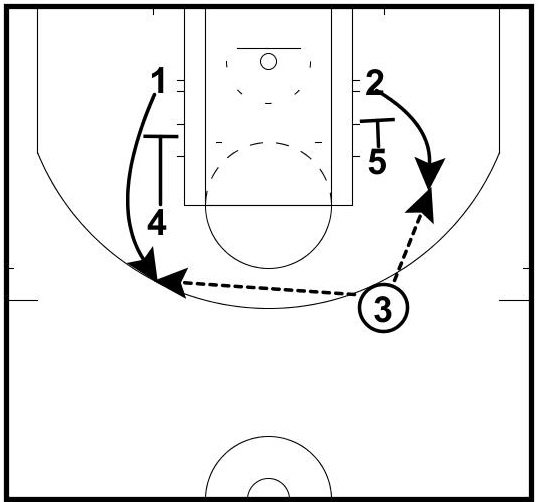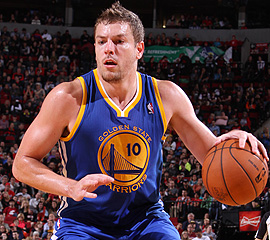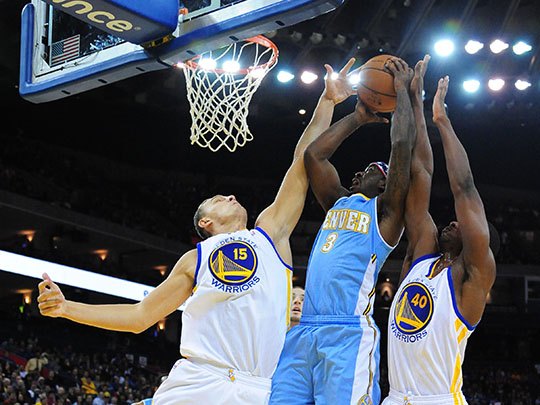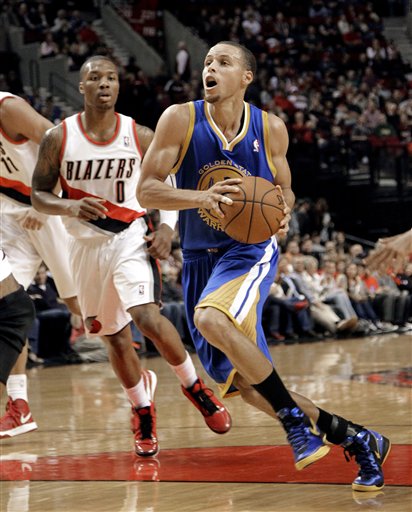(Written For Blue Man Hoop)
What was once an intriguing stop in the Nuggets playoff path has become a likely upset. Following a game four victory, the Warriors will seek to spare the Nuggets the expense of a return trip to Oakland and complete the gentleman’s sweep. In the meantime, each Warrior must be assigned a relatively arbitrary grade evaluating their performance in Game 4. Though I despise this practice among teachers, these grades will be assigned based on performance relative to ability, not to objective performance. Why? As a generally pessimistic fan, I promised to judge the Warriors playoff performance based not on aggregate results, but on performance relative to my low expectations. Of course, the Warriors have vastly exceeded those expectations to such a degree that even the aggregate results are hyperbolically impressive.
Stephen Curry: A+
Despite a quiet first half scoring-wise, Curry was once again outstanding, scoring 31 points on 10-16 shooting. In the 33 minutes Curry played, the Warriors outscored the Nuggets by 21 points. Curry’s third quarter scoring barrage sunk the Nuggets, but by drawing constant attention, he kept the Warriors afloat throughout the game, setting up teammates both with his passing and by forcing the Nuggets to overcommit to on and off ball screen defense. For those who do not appreciate the oral beauty of Steph Curry’s shooting, here is a more visual rendition.
Jarrett Jack: A+
The Nuggets focused their defensive attention on Curry, and Jack took full advantage, scoring 21 points on 9 field goal attempts. The constantly probing Jack also dished out 9 assists, and played 42 minutes. The Nuggets generally placed their best perimeter defenders, Andre Igoudala and Corey Brewer, on Curry, leaving Jack to score on the smaller Ty Lawson and slower Andre Miller. While it was Steph Curry who ignited the blowout, Jack was the steady hand guiding the Warriors to victory.
Klay Thompson: C+
Thompson finished with 13 points on 5 of 10 shooting, and played a team-high 43 minutes. Unlike the first two games, Thompson was not a focus of the Warriors offense, and unlike Game 3, he was not completely forgotten. He guarded Andre Iguodala for the majority of his minutes, contributing both to his 19 points on 7 of 11 shooting and to his 7 turnovers. Iguodala did make some difficult, contested shots over Thompson, but also took advantage of Thompson’s confused off ball defense to find cutting lanes and open three-point attempts. For several possessions, Thompson defended Lawson, who was able to score, but with far less ease than in his earlier minutes defended by Jarrett Jack.
Andrew Bogut: A
Adding to a typically solid defensive night, Bogut had his best offensive performance of the season. The Nuggets decided to trap Curry off pick and rolls, and committed for even longer than they have throughout the series, giving Bogut the space to attack the rim and find Warriors shooters. Through the first three games, Bogut was hesitant upon receiving the pass from Curry after setting a screen, but tonight, was ferociously aggressive, mixing a few fancy passes with his assaults on the rim. This was the Bogut the Warriors envisioned in the Monte Ellis trade.
Harrison Barnes: C-
Harrison Barnes played an ineffectual 31 minutes, balancing decent but not game-changing defense with inefficient offense. Barnes contributed to the struggles of several Nuggets, but, after two promising performances, seemed to have no great effect on the outcome of this game.
Draymond Green: A+
This was quite possibly Green’s best game of the season. In 25 minutes off the bench, the rookie scored 13 points on 5-8 shooting, had 6 rebounds and 4 steals, and contributed to the Warriors outscoring the Nuggets by 15 points over his playing time. Green made 2 shots from behind the arc, and played aggressive defense on several Nuggets, including Ty Lawson, Andre Miller, and Andre Iguodala. This game was the ideal example of what the Warriors hope to receive from Draymond Green in the future.
Carl Landry B+
Continuing his player-option playoff tour, Landry scored 17 points and 11 field goal attempts, and, though he only played 18 minutes, helped the Warriors punish Denver for trapping pick and roll ball handlers.



